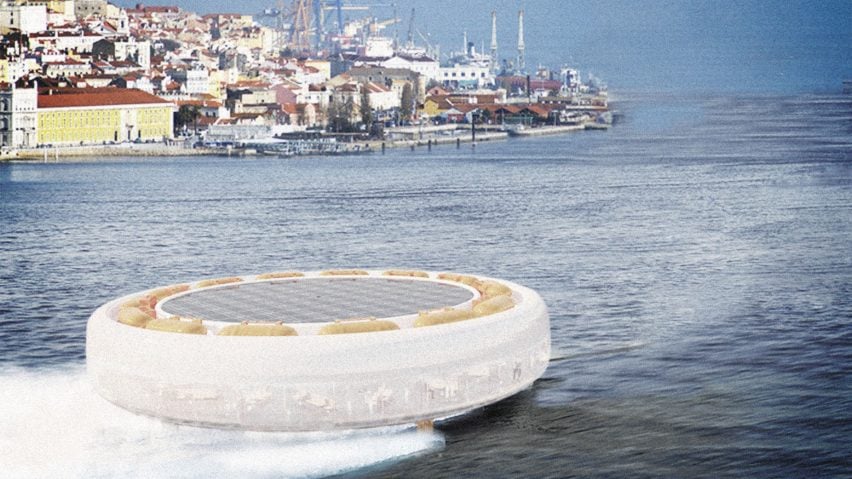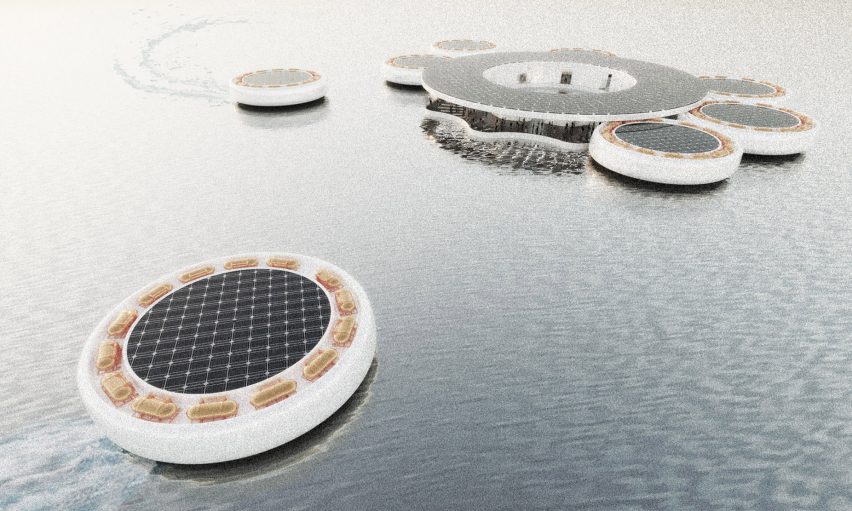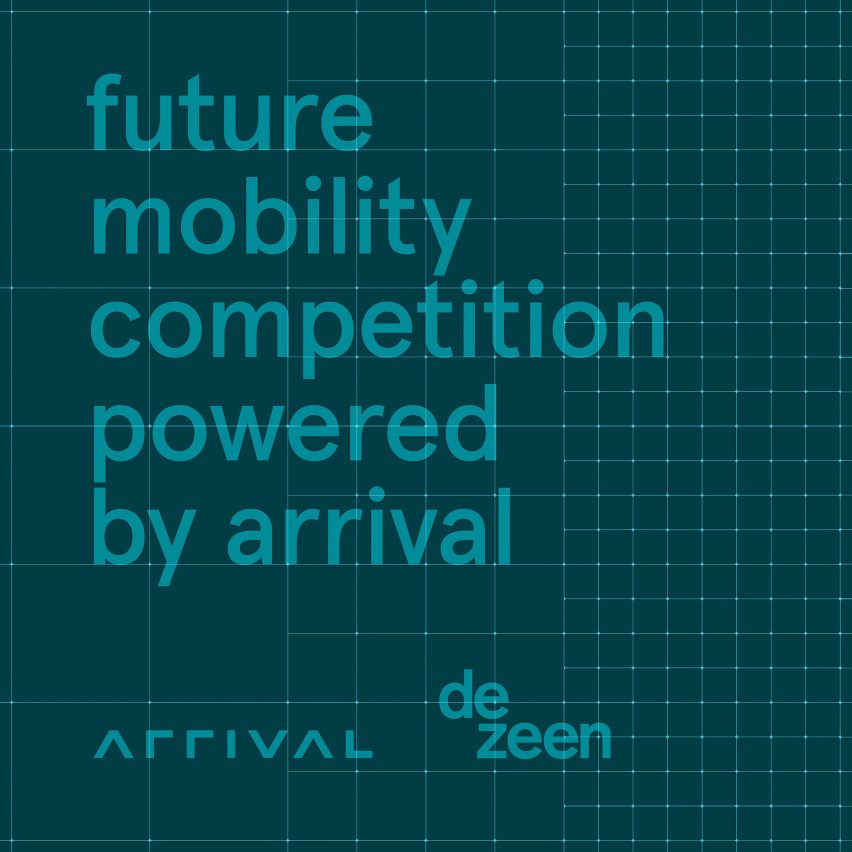
Marcelo Dantas replaces diesel ferries with autonomous solar-powered vessels to traverse the Tagus river
Marcelo Dantas is the next finalist in Dezeen's Future Mobility Competition powered by Arrival with a proposal to revive Lisbon's ferry service with a network of autonomous, solar-powered vessels.
Called Tagus Link, Dantas's proposal reimagines the ferry service in Lisbon, Portugal, which has been largely abandoned in favour of private transportation due to long wait times, few pier-to-pier routes and lack of flexible connections.
Dantas's vision comprises a central hub located on the river, which will act as a docking station connecting multiple ferry routes for passengers to easily transit and reduce waiting times.
Traditional ferries have been reinvented as lightweight, round vessels that are autonomous and powered by directional jetfoils for faster and more comfortable travel. The vessels can connect to the hub via an electromagnetic auto-docking solution to create a safer and levelled disembarking process.
The ferries are clad in a reflective acrylic material to reduce solar heat gain and feature foldable seats and trays made from cork as a nod to the abundance of the material within Portugal.
Read more about the proposal below:

Tagus Link
Marcelo Dantas
Lisbon, Portugal
Finalist
"Because of its large width, high tides and recurring fog, Lisbon's Tagus River has always been seen as a geographical frontier.
"As Lisbon's metropolitan area grew to the south bank, new rail and road bridges – including the longest in Europe – and a ferry boat service were created to help daily commuters each way.
"However, an intricate river coastline in the south bank, with multiple small and medium-sized cities along its shores, and a ferry boat service with pier-to-pier direct connections only, generate long waiting and travel times and offer no options for flexible connections between banks, or even any connections between south bank cities.
"For these reasons, over 50 per cent of the south bank commuters don't use public transport, opting for private transportation, which has led to the growing abandonment of this mass transit option, resulting in the closing of some piers and lines.
"Other issues with the current solution relate to high levels of air pollution emitted from diesel-powered ferries, to the noise produced by their engines, and to various accessibility barriers for disabled people.
"Believing in the potential of Tagus River as an efficient, sustainable, and cost-effective transportation channel led to the development of Tagus Link.
"Tagus Link turns the estuary from a frontier into a hub, linking the currently independent ferry routes in a central point to allow for the connection of every point in the network – including previously closed or future new docks, reducing travel times for most of the connections.
"Being electric, these ferries run mostly on (locally abundant) solar energy, meaning up to a 50 per cent lower operating cost, compared to a traditional diesel-powered ferry.
"Short operating distances mean only some extra energy needs to be stored in batteries, charged by solar panels installed on each ferry and in the hub.
"The new ferries and the hub are managed by a smart passenger distributing and routing system. Based on information provided online or while boarding on each dock – like on modern elevators - this system adapts the boat's docking position in the hub, and even its final destination, for reduced trans boarding times.
"This system will thus generate individual optimised transit options for every passenger, guiding them directly to the destination through the system."

Future Mobility Competition
The Future Mobility Competition is a global design contest that seeks to support emerging talent, bringing radical solutions to solve mobility challenges in cities and, in turn, create true sustainability and empower local communities.
Launched in partnership with electric vehicle company Arrival, the contest asked entrants to identify problems with mobility in their city, or a city they are familiar with, and propose solutions that will improve how people move around their environment.
The contest received over 170 entries from more than 45 different countries around the world.
The entries were assessed by a judging panel comprising Kunlé Adeyemi of architecture, design and urbanism studio NLÉ, Elizabeth Diller of New York studio Diller Scofidio + Renfro, Yves Béhar of Fuseproject, Jeremy Offer and Martina Wierzbicki from Arrival, as well as Marcus Fairs and Cajsa Carlson from Dezeen.
The panel selected 10 proposals as finalists to be published on Dezeen. We are unveiling one finalist a day from 27 June, culminating in the winner being announced on 8 July.
The winner will win the top prize of $25,000, while the runner-up will receive $15,000 and the third-placed entrant will receive $10,000. Each of the seven remaining finalists will receive prize money of $5,000.
Find out more about the Future Mobility Competition ›
See all the finalists revealed so far ›
Partnership content
The Future Mobility Competition powered by Arrival is a partnership between Dezeen and Arrival. Find out more about Dezeen partnership content here.